On June 22, 1977, Aleksandr Ogorodnik killed himself with a CIA-supplied suicide pill after the KGB arrested him based on information initially provided by a mole within the Agency. Just over three weeks later, CIA officer Martha (Marti) Peterson—unaware of Aleksandr’s death—was seized in a KGB ambush while servicing a dead drop in Moscow.
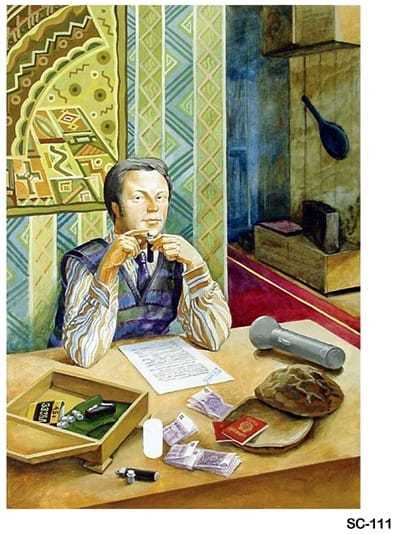
TRIGION at desk in Moscow with T-100 subminiature document camera. Credit SPYCRAFT, by Robert Wallace and H Keith Melton.
The streets of Moscow were one of the most important, and dangerous, battlefields of the Cold War. American intelligence officers like Marti worked with assets like Aleksandr in the shadows to collect Soviet secrets. The Soviets, in turn, closely watched all foreign nationals and their own citizens for signs of espionage.
Although the story of TRIGON ended tragically, the intelligence Aleksandr provided gave US policymakers valuable insights into Soviet foreign policy plans and intentions. It was insights like this which ultimately helped us win the Cold War.
Recruiting a Spy:
Aleksandr Ogorodnik was a mid-level official in the Soviet Ministry of Foreign Affairs (MFA) posted in Latin America and had access to information about Soviet intentions for the region. He enjoyed his life in Latin America and disliked the Soviet system, which he found oppressive.

Aleksandr Ogorodnik (codename: TRIGON)
The CIA recruited Aleksandr in South America in 1973. Upon signing up to spy for the Agency, he was given the codename TRIGON.
TRIGON smuggled documents from the embassy and took them to a safe-house, where Agency officers photographed them. The material he provided gave unique insights into Soviet policies in Latin America, including plans to influence other governments.
Return to the Motherland:
In anticipation of his recall to Moscow, CIA officers taught TRIGON operational trade-craft and techniques. He also received training in secret writing, the use of one-time pads, and dead drop techniques.
One of the first female CIA case officer to serve behind the Iron Curtain, Marti Peterson, went to Moscow to be TRIGON’s handler. At the time, the KGB discounted the ability of women to conduct intelligence operations, so Marti went unnoticed for almost 18 months.
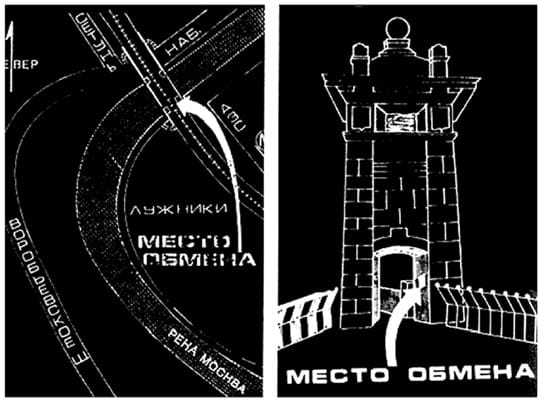
TRIGON’s value rose significantly after he returned to Moscow in October 1974. He had agreed to continue spying for the Agency, but he asked that the US government resettle his then-pregnant girlfriend. Before leaving for the Soviet Union, TRIGON requested a suicide device in case he was caught. After high-level deliberations at Langley, his CIA handlers reluctantly gave him a fountain pen containing a cyanide capsule.
A few months later, per his recontact instructions, TRIGON gave a “sign of life” signal in February 1975. As face-to-face meetings were too dangerous, impersonal operational encounters—using signal sites, radio messages, concealment devices, dead drops, and car drops—began in October and were scheduled monthly.
For nearly two years they worked together, Marti and TRIGON never met. They were only spies passing in the night.
Dead Rats for Dead Drops:
Moscow was a challenging environment to operate within. Even finding one’s way around Moscow proved difficult because Soviet-produced maps of the city were deliberately inaccurate. The Agency had to get creative when communicating with assets, which regularly included the use of dead drops.
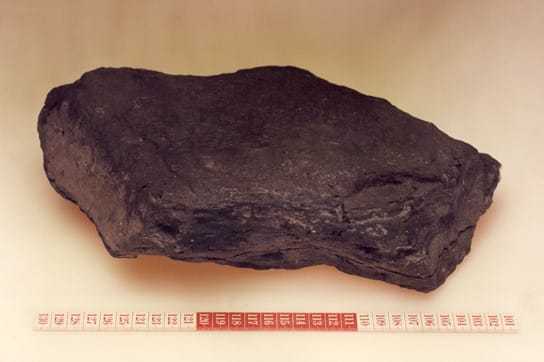
Dead drop rock intended for TRIGON. Credit SPYCRAFT, by Robert Wallace and H Keith Melton.
Dead drops are a way for intelligence officers to leave or receive items at a secret location in order to exchange information with an asset without having to meet directly. Everyday items like fake bricks can be used for dead drops. Packed with messages or supplies, the bricks can be deposited at a set location, such as a construction site, for later pickup.
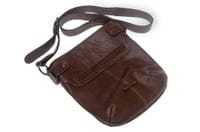
Marti Peterson’s purse, used during dead drop operations in Moscow.
One of the more surprising concealment devices sometimes used by the CIA were dead rats. The body cavity was large enough to hold a wad of money or roll of film. Hot pepper sauce kept scavenging cats away after the “rat” was tossed from a car window at a prearranged drop site.
Marti used a purse to conceal supplies and equipment that she transferred to TRIGON via dead drop exchanges. Because of the KGB’s gender bias, the purse, like Marti herself, did not attract suspicion.
The Mole:
TRIGON soon secured a position in the Global Affairs Department of the MFA that gave him access to incoming and outgoing classified cables to Soviet embassies worldwide. He provided sensitive intelligence about Soviet foreign policy plans and objectives. His reporting went to the President and senior US policymakers.
Meanwhile, Karl Koecher, a naturalized US citizen, was working at CIA as a translator and contract employee. (Unbeknownst to CIA, he was also working concurrently for the Czech Intelligence Service.) He had incidental access to information about TRIGON’s first dealings with the Agency and told his intelligence service, which then notified the KGB.
When that occurred is not known, nor is the time when the KGB began investigating TRIGON. In early 1977, however, his case officers began noticing indications—principally a marked decline in the quality of the photographs—that he had been compromised and was under KGB control.
The Krasnoluzhskiy Most
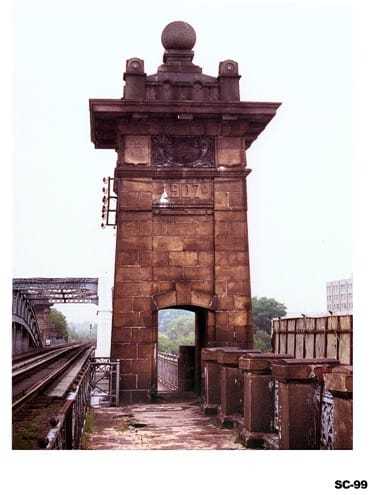
Krasnoluzhskiy Most, Moscow Bridge site for dead drop. Credit SPYCRAFT, by Robert Wallace and H Keith Melton.
TRIGON never showed up for a dead drop encounter on June 28, 1977, so another was arranged via radio message for two weeks later.
On July 15, Marti went to the Krasnoluzhskiy Most—a railroad bridge near Lenin Central Stadium —to set up the dead drop. The bridge spanned the Moscow River with a pedestrian walkway running along the side of the tracks. A spot was prepicked where TRIGON would receive a “drop” from Marti, and leave a package to be retrieved later that same night.
As night fell over Moscow, Marti left a concealment device in a narrow window inside a stone tower on the Krasnoluzhskiy Most. It was a trap.
A KGB surveillance team was waiting and seized Marti. They took her to Lyubianka Prison, where she was questioned for hours and photographed with some of the espionage paraphernalia Agency officers and TRIGON had used. She was declared persona non grata (an unwelcome person) and sent back to the US immediately.
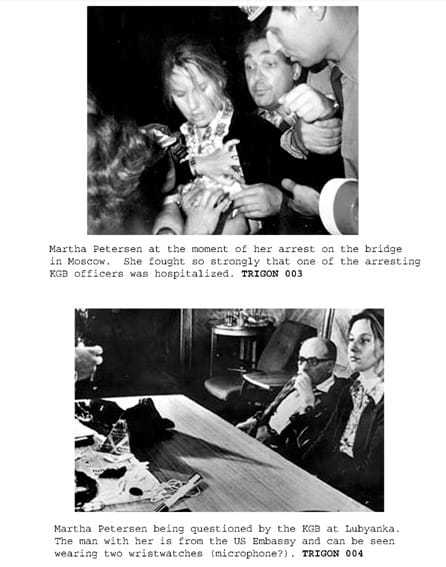
The Agency later learned that Alexander Ogorodnik had killed himself a month before Marti had been apprehended. He told the KGB he would sign a confession but asked to use his own pen. Marti wrote in her memoir, The Widow Spy, that “Opening the pen as if to begin writing, he bit down on the barrel and expired instantly in front of his KGB interrogators. The KGB was so intent on his confession that they never suspected he had poison….TRIGON died his own way, a hero.”

